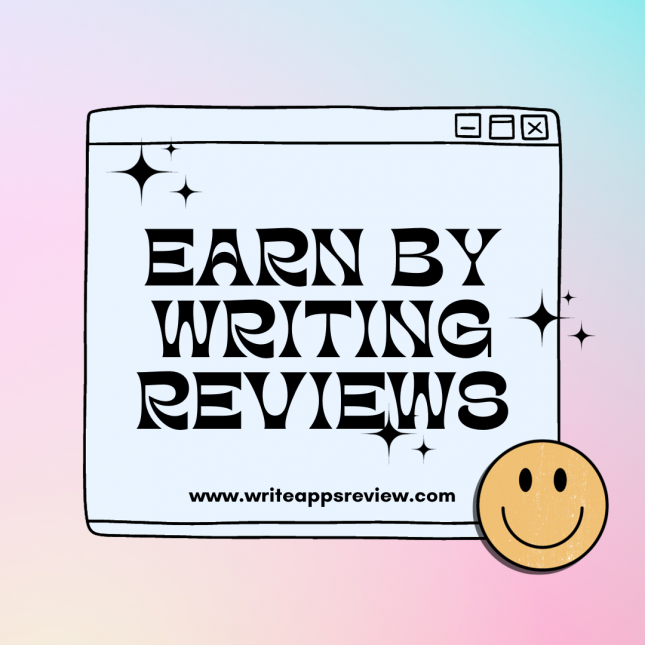How to Write a Review for an App: A Comprehensive Guide
Writing a review for an app is not just about expressing your opinion; it’s a vital contribution that can help fellow users make informed decisions. A well-crafted app review can shed light on the app’s strengths and weaknesses, functionality, user experience, and overall value. In this article, we will explore effective strategies for writing impactful app reviews, covering everything from assessing the app to structuring your feedback. Whether you are a casual user or a tech enthusiast, these insights will help you articulate your thoughts clearly and thoughtfully.
Get $25 For Your First App Review
Understanding the Purpose of Your Review
Before you start typing, it’s crucial to understand the purpose of your review. Whether you’re sharing your appreciation for an app or one that has disappointed you, each perspective serves a different audience. Clearly identifying your purpose helps direct your thoughts and informs your readers.
For instance, your review could educate potential users about the app’s core features and performance. Alternatively, you might want to warn users about potential pitfalls, thereby protecting them from a subpar experience. By grounding your review in a specific purpose, you will make your feedback more valuable and actionable for others.
Additionally, consider the audience for your review. Are you writing for experts who require detailed technical analysis, or for casual users seeking general guidance? Tailoring your language and depth of information can greatly enhance the effectiveness of your review.
Get $25 For Your First App Review
Key Features to Evaluate
When reviewing an app, there are crucial elements you should assess to provide a comprehensive overview. Start with the usability of the app. Is the interface intuitive and user-friendly? A well-designed interface can significantly improve user satisfaction.
- Performance: Does the app load quickly? Are there any bugs or crashes?
- Functionality: Does it perform its intended tasks efficiently? Are there any features that exceed expectations?
- Updates: Is the app regularly updated to fix issues or introduce new features?
Moreover, consider how the app compares to alternatives available in the market. Does it stand out due to unique features, or does it fall short in areas where competitors excel? This comparative insight can help guide potential users in making decisions aligned with their needs.
Structuring Your Review Effectively
An effective review should be structured for maximum clarity and engagement. A recommended format includes an introductory statement, a detailed exploration of the features, and a conclusion summarizing your thoughts.
In your introduction, clearly state the app’s name and its intended purpose. Follow it with a brief overview of your experience. For the body, delve deeper into various aspects, using subheadings for different features or sections. This format not only breaks the text into digestible chunks but also allows readers to navigate easily based on their interests.
Finally, in your conclusion, summarize your overall assessment. Would you recommend this app? Why or why not? A concise conclusion reinforces your key points and leaves an impression on your reader.
Personal Experience: Adding Authenticity
To truly resonate with readers, your review should include personal experiences and anecdotes. Share specific instances that highlight the app’s advantages or disadvantages. For example, if an app saves you time in managing tasks, explain how it has done so and provide details.
Moreover, honesty is crucial. Even if you loved the app, mention any minor irritations or issues. This adds authenticity to your review, reflecting a balanced perspective that readers often find more relatable. Remember, a transparent review encourages trust and engagement.
Think about rhetorical questions to engage your audience further. For example, “How often have you struggled with cluttered apps that compromise productivity?” can help readers connect with your experiences.
Engaging with Readers and Responding to Feedback
After posting your review, be prepared for interactions. Engaging with readers can deepen your connection with the community and enhance the credibility of your review. Address questions and comments respectfully, and even consider updating your review if new features or significant changes warrant it.
Being receptive to feedback can also lead to insightful discussions. Others might share their experiences or provide additional insights that can expand your perspective. Remember, your goal is to foster a space where potential users feel empowered to make educated choices.
Ultimately, becoming part of that community can elevate your role as a reviewer, positioning you as a trusted source for app recommendations.
Conclusion
Writing a valuable app review is an art that requires clarity, structure, and personal touches. By understanding your review’s purpose, evaluating key features, structuring your feedback effectively, sharing personal experiences, and engaging with readers, you can greatly influence how others perceive an app. With these insights, you are now equipped to write thoughtful, impactful reviews that not only serve your interests but also assist fellow users in navigating the digital landscape with confidence.




